There is no doubt that the Basilique Sainte Foy in Conques is one of our favorite churches. We rediscover its marvels whenever we return to the Aveyron and have written about it several times, especially about the famous western tympanum which is one of the marvels of Romanesque sculpture. We have even written about how modern visitors respond to that tympanum.
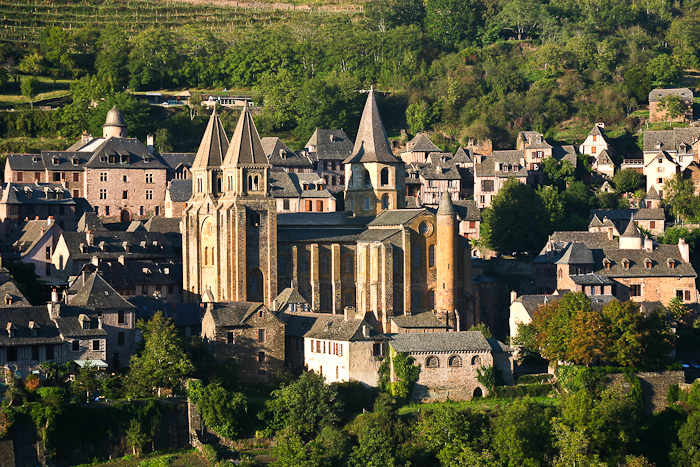
Today’s post is another simple examination of the sculpture, this time of the interior historiated capitals. As an important pilgrimage church on the Camino de Santiago, the capitals were an important part of the pedagogical program of the basilica. The stories illustrated were designed to confirm the pilgrims in their Christian faith.
The first capital that we examine is in the ambulatory, the Sacrifice of Isaac. Abraham wields a sword while holding the hand of Isaac, seated to his right. The Hand of God points at the head of Abraham, denoting that He is speaking to Abraham, while the tremulous Isaac is sheltered by the wing of the angel. To the left of Abraham, we see the ram that he will later sacrifice in place of his son. This capital surely was created to remind the viewers of the suffering that God will endure when he sacrifices his only son.
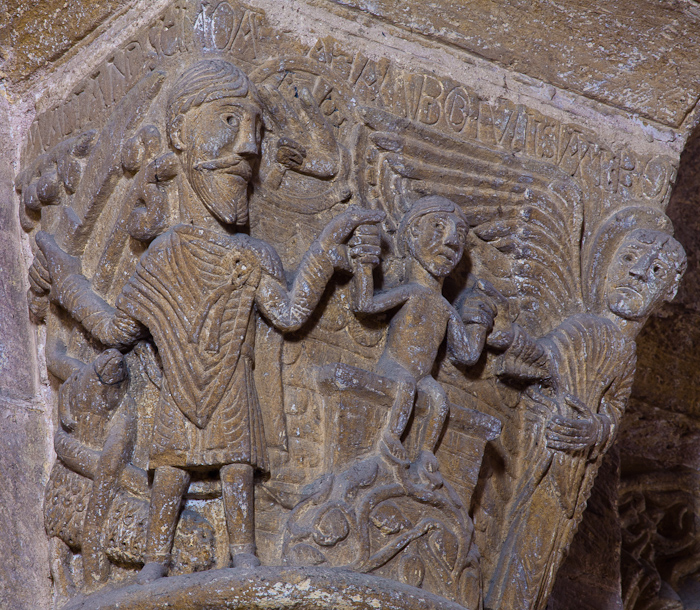
The next capital is part of a series on the life of Sainte Foy. This one, found at the edge of the north transept, features her arrest by Damien. Sainte Foy (Faith) was a young woman of Agen, martyred in the 3rd Century. In this depiction, she is on the far right of the ensemble, a picture of innocence. Her crowned Roman judge, Damien, is seated on the left and behind him a demon gives him counsel.
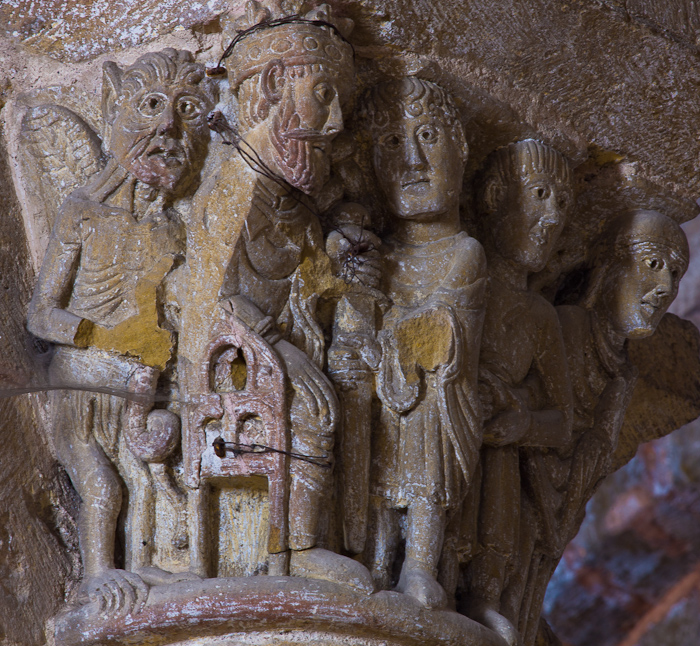
In this second version of the Sainte Foy capital, we see more clearly on Sainte Foy’s side. The guard leads Foy by the hand to receive the judgment. Her hand makes a gesture of benediction, which foreshadows her end. When she refused to abandon her Christian faith and make the pagan sacrifices demanded of her, she was tortured to death with a red-hot brazier.
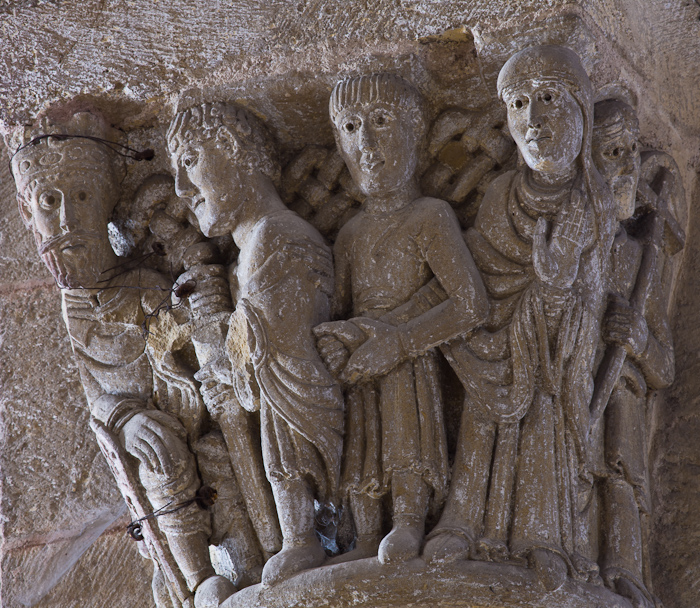
The next capital is a bit enigmatic. A frieze that runs across the top shows two oxen carrying the cross. The ox was one of the witnesses of the birth of Jesus and recognized him as the Son of God. This fulfills the prophecy of Isaiah 1:3, “the ox knoweth his owner, and the ass his master’s crib.” On the left hand side of the capital, the hand of God bestows a blessing. The squatting figure between the angels is part of a pair. This one seems to be meditating – the figure on the opposite side is the same except that his hands are raised in prayer.
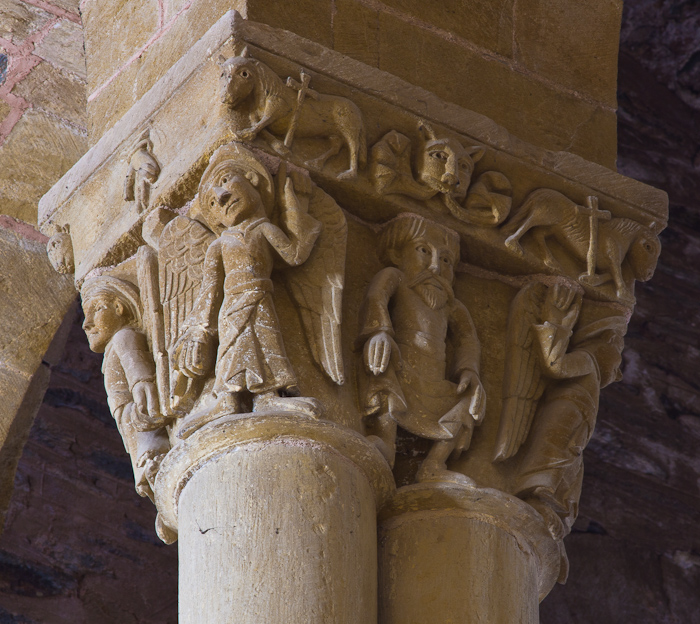
The next image is not a capital per se, but a figure in the squinch of the chancel dome. The winged archangel Gabriel bestows a benediction on the pilgrims passing below. In this figure we clearly see remains of the original polychrome painting.
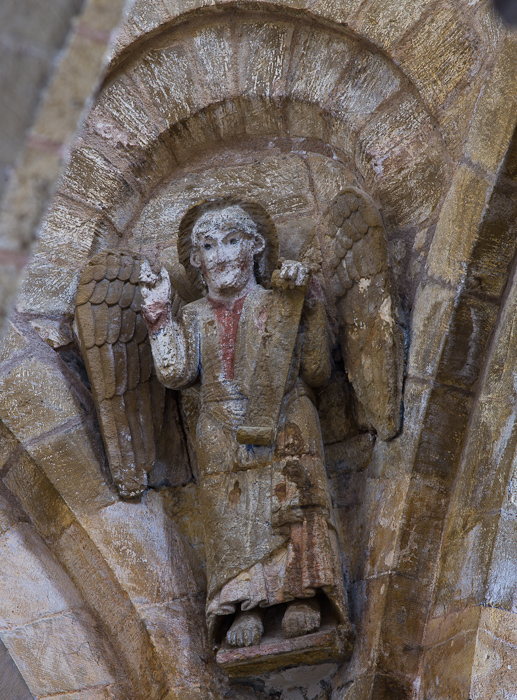
The pair of angels depicted in this next capital “sing the thrice holy God” at the Altar of Heaven while we here on earth chant at the altar of the church. “And one cried unto another, and said, Holy, holy, holy, is the Lord of hosts: the whole earth is full of his glory.” Isiaih 6:3
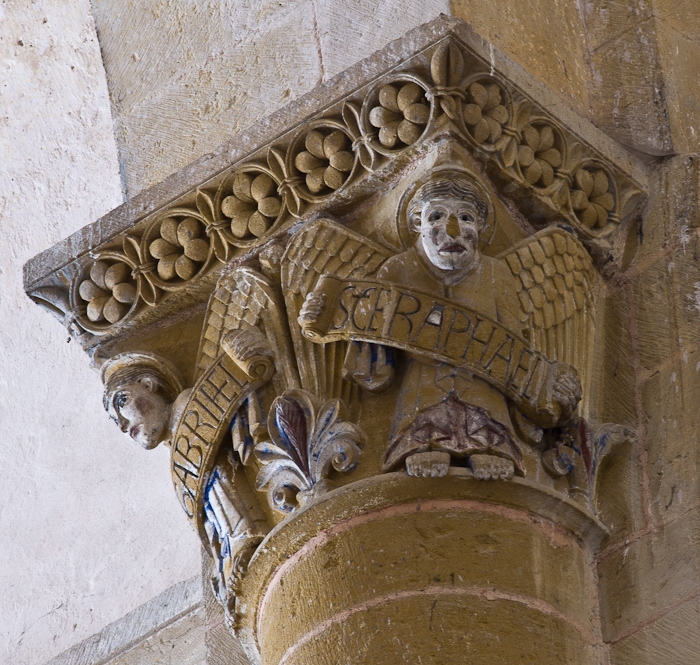
The capital of “Christ with the chalices” has an interesting interpretation. As part of the Easter celebration in Matthew 26, the story is told that Christ offered two cups. One cup is for the forgiveness of sins while the other is the cup of wrath and judgment. One cup brings life and the other death. Christ chose one for himself, and drank the cup of curses so that we might drink the cup of blessings. When I saw this capital in situ, I was not sure of the interpretation because I couldn’t see the nimbus around Christ’s head. In the photograph, however, it is visible in low relief behind Jesus’ head.
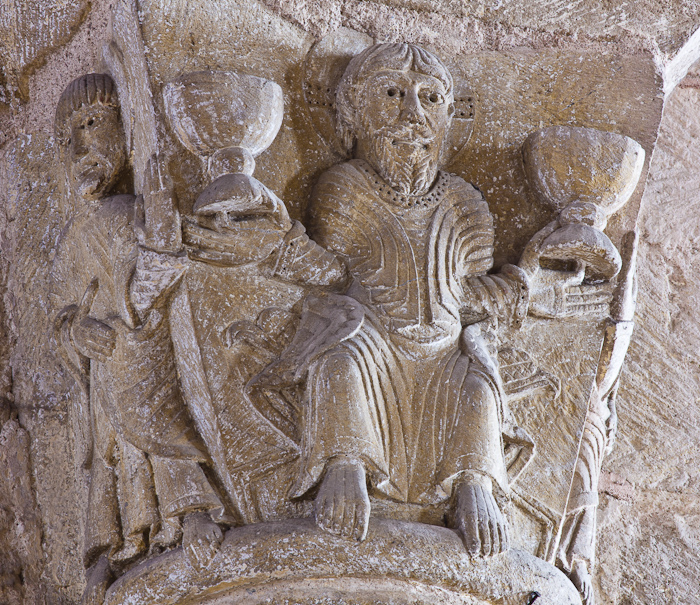
This last capital delights me because of its setting. It features the combat between two knights jousting. The carving is wonderful and the abstract pattern above works very well as a frame. But the grimacing figure in the background supporting the weight of the arch above him is magnificent. All these carvings were not necessarily given an instructive mission. Some just seem to be reactions to life and its burdens.
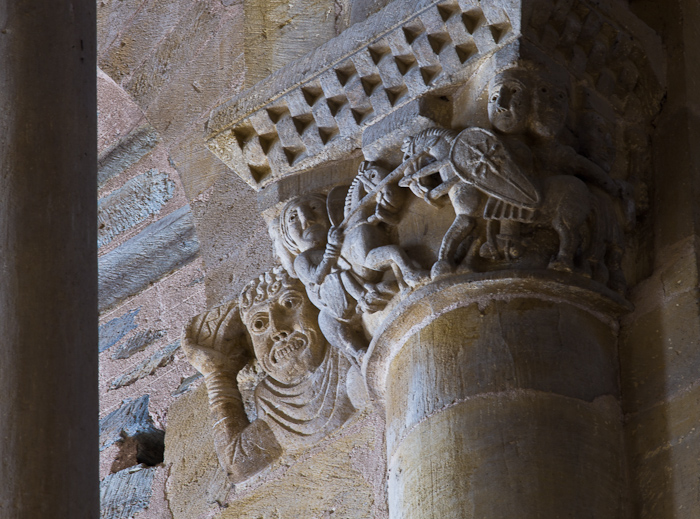
There are many other wonderful capitals in the Basilique Sainte Foy and a myriad of other sculptural ensembles. This important pilgrimage church stands almost completely intact and is a wonder of the Romanesque world of a thousand years ago. It is well worth an extended visit where you can appreciate just how marvelous it remains today.
Location: 44.599227° 2.398132°

You teach us so much, Dennis. Looking at the remnants of colour on the figures, I wonder what the original artists and church-goers would think if they could see them now, unadorned. We find them beautiful, but they probably wouldn’t. But then some of your commenters have said they don’t like the colours. Yet, if we could see all these sculptures in their bright colours, we probably wouldn’t use the term ‘dark ages’ any more.
Thanks, Trish. I am sure that the people of the Middle Ages would have looked at these colorless works and wondered why we hadn’t maintained them properly. Many people today prefer the austere stone and marble, but that is what they have seen in our times. I think like Macaulay’s “Pleasure of Ruins”, we have created an imaginary past in our minds and the infusion of the bright colors interferes with this creative act.
Wonderful photos and as always great commentary. Thank you! J
The heads on the St. Foy capitals remind me of the way the heads of later Roman emperors were depicted.
The only example I can pull up at the moment is the head of the colossal statue of Constantine at Rome…but others lurk in the background of my memory.
Scholars have identified a “Master of Conques” who created works as far away as Léon and Santiago (including the famed Puerta de las Platerias. The figures certainly have something of the hieratic style of the late Roman sculpture. I hadn’t noticed this until you mentioned it. I wonder if this was intentional based on observation.
i love learning the goodies you show..kathy
Great shots and great write-up, some really amazing stuff here.
Thank you so much, Randall. We took the opportunity to see you wonderful site – was stunned by the eagles of Hokkaido.